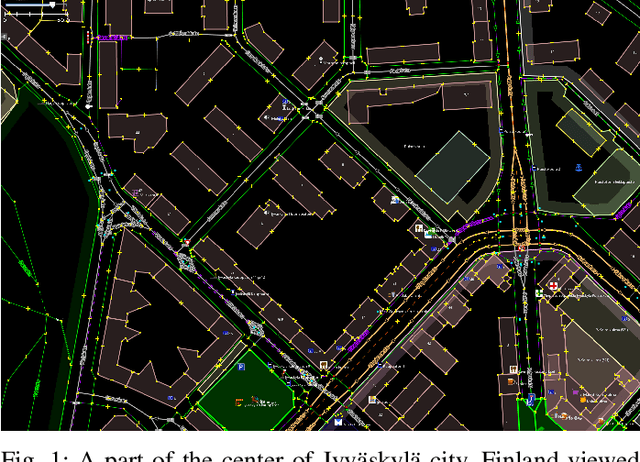Hannu Turtiainen
OSRM-CCTV: Open-source CCTV-aware routing and navigation system for privacy, anonymity and safety
Aug 20, 2021



Abstract:For the last several decades, the increased, widespread, unwarranted, and unaccountable use of Closed-Circuit TeleVision (CCTV) cameras globally has raised concerns about privacy risks. Additional recent features of many CCTV cameras, such as Internet of Things (IoT) connectivity and Artificial Intelligence (AI)-based facial recognition, only increase concerns among privacy advocates. Therefore, on par \emph{CCTV-aware solutions} must exist that provide privacy, safety, and cybersecurity features. We argue that an important step forward is to develop solutions addressing privacy concerns via routing and navigation systems (e.g., OpenStreetMap, Google Maps) that provide both privacy and safety options for areas where cameras are known to be present. However, at present no routing and navigation system, whether online or offline, provide corresponding CCTV-aware functionality. In this paper we introduce OSRM-CCTV -- the first and only CCTV-aware routing and navigation system designed and built for privacy, anonymity and safety applications. We validate and demonstrate the effectiveness and usability of the system on a handful of synthetic and real-world examples. To help validate our work as well as to further encourage the development and wide adoption of the system, we release OSRM-CCTV as open-source.
BRIMA: low-overhead BRowser-only IMage Annotation tool (Preprint)
Jul 13, 2021


Abstract:Image annotation and large annotated datasets are crucial parts within the Computer Vision and Artificial Intelligence fields.At the same time, it is well-known and acknowledged by the research community that the image annotation process is challenging, time-consuming and hard to scale. Therefore, the researchers and practitioners are always seeking ways to perform the annotations easier, faster, and at higher quality. Even though several widely used tools exist and the tools' landscape evolved considerably, most of the tools still require intricate technical setups and high levels of technical savviness from its operators and crowdsource contributors. In order to address such challenges, we develop and present BRIMA -- a flexible and open-source browser extension that allows BRowser-only IMage Annotation at considerably lower overheads. Once added to the browser, it instantly allows the user to annotate images easily and efficiently directly from the browser without any installation or setup on the client-side. It also features cross-browser and cross-platform functionality thus presenting itself as a neat tool for researchers within the Computer Vision, Artificial Intelligence, and privacy-related fields.
Towards large-scale, automated, accurate detection of CCTV camera objects using computer vision. Applications and implications for privacy, safety, and cybersecurity. (Preprint)
Jun 06, 2020



Abstract:While the first CCTV camera was developed almost a century ago back in 1927, currently it is assumed as granted there are about 770 millions CCTV cameras around the globe, and their number is casually predicted to surpass 1 billion in 2021. At the same time the increasing, widespread, unwarranted, and unaccountable use of CCTV cameras globally raises privacy risks and concerns for the last several decades. Recent technological advances implemented in CCTV cameras such as AI-based facial recognition and IoT connectivity only fuel further these concerns raised by privacy-minded persons. However, many of the debates, reports, and policies are based on assumptions and numbers that are neither necessarily factually accurate nor are based on sound methodologies. For example, at present there is no accurate and global understanding of how many CCTV cameras are deployed and in use, where are those cameras located, who owns or operates those cameras, etc. In addition, there are no proper (i.e., sound, accurate, advanced) tools that can help us achieve such counting, localization, and other information gathering. Therefore, new methods and tools must be developed in order to detect, count, and localize the CCTV cameras. To close this gap, with this paper we introduce the first and only computer vision MS COCO-compatible models that are able to accurately detect CCTV and video surveillance cameras in images and video frames. To this end, our state-of-the-art detector was built using 3401 images that were manually reviewed and annotated, and achieves an accuracy between 91,1% - 95,6%. Moreover, we build and evaluate multiple models, present a comprehensive comparison of their performance, and outline core challenges associated with such research. We also present possible privacy-, safety-, and security-related practical applications of our core work.
 Add to Chrome
Add to Chrome Add to Firefox
Add to Firefox Add to Edge
Add to Edge